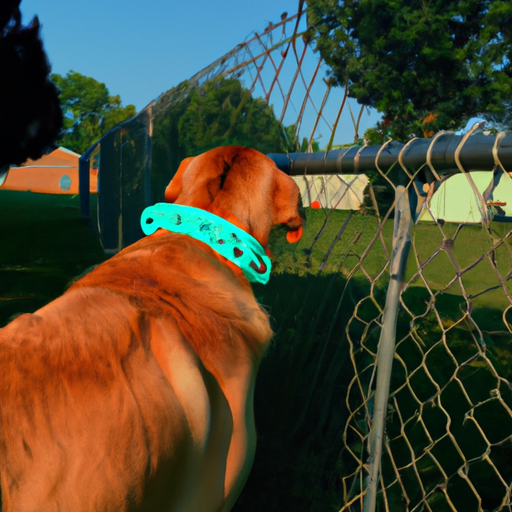Understanding the Concept
Invisible fences, also known as radio fences or electronic fences, are a popular solution for dog owners wishing to keep their furry friends safe without obstructing the view of their property. But how exactly do they work? These fences operate on a simple principle: they create a boundary that your dog learns not to cross, through a combination of training and technology.
Key Components of Invisible Fences
There are three main parts to an invisible fence system:
- Transmitter: The transmitter, usually housed inside your home, sends a radio signal through the boundary wire.
- Boundary Wire: The wire, which defines the area your dog is allowed to roam in, carries the radio signal from the transmitter.
- Receiver Collar: Your dog wears the receiver collar, which picks up the radio signal from the wire.
When your dog nears the boundary, the collar emits a warning beep. If your dog continues to approach the boundary, the collar delivers a harmless static correction, reminding him to stay in the safe area.
The Training Process
Training your dog to understand the invisible fence is crucial. You’re not just setting up a fence, you’re teaching your dog a new way to understand their boundaries.
- Week 1: Introduce your dog to the boundary with flags as visual indicators, and teach him to respond to the warning beep.
- Week 2: Teach your dog to resist distractions near the boundary.
- Week 3: Allow your dog to roam the yard on a long leash, giving him more freedom.
- Week 4: Let your dog off the leash under supervision.
This process can be adjusted according to your dog’s learning pace and temperament. Remember, patience and consistency are key.
Benefits and Limitations
| Benefits | Limitations |
|---|---|
| Unobstructed view | No physical barrier for other animals or people |
| More affordable than traditional fencing | Requires training |
| Adjustable boundary | May not be suitable for all dogs |
Remember, an invisible fence is not a one-size-fits-all solution. It’s important to consider your dog’s personality, size, and training capacity.
Keeping the System Effective
The effectiveness of an invisible fence relies heavily on consistent training and system maintenance. Check the system regularly to ensure it’s working properly. Change the collar batteries as needed, and inspect the boundary wire for any potential damage.
Frequently Asked Questions
Q: How long will it take to train my dog?
A: While the timeline varies for each dog, most dogs start to understand the system within 2-4 weeks of consistent training.
Q: Can the static correction harm my dog?
A: No, the static correction is safe. It’s designed to get your dog’s attention, not to punish or cause pain.
Q: Can I use an invisible fence with a puppy?
A: It’s generally recommended to wait until a puppy is at least 6 months old before beginning invisible fence training.
Remember, an invisible fence is a tool to keep your dog safe. It’s not a substitute for regular exercise, socialization, and interaction with their human family. As a caregiver, you have the power to offer your dog a safe and loving environment, and an invisible fence can be a part of that solution.



